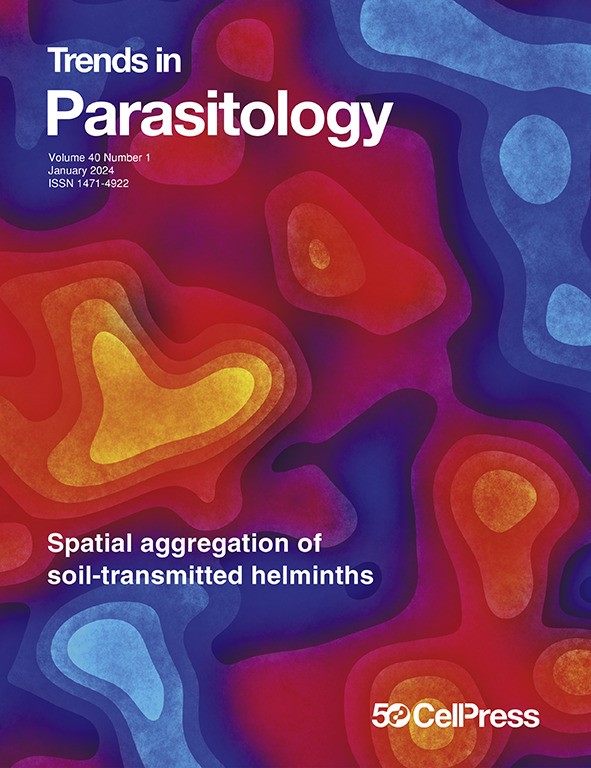节肢动物脂联素受体样蛋白与微生物持久性。
IF 6.6
1区 医学
Q1 PARASITOLOGY
引用次数: 0
摘要
由多种病原体引起的节肢动物传播疾病是全球公共卫生威胁。最近的研究表明,冈比亚按蚊、埃及伊蚊和肩胛骨伊蚊等载体中的脂联素受体样蛋白影响疟疾、寨卡病毒和莱姆病等疾病的传播。这些受体可能成为控制媒介传播疾病的新靶点。本文章由计算机程序翻译,如有差异,请以英文原文为准。
Arthropod adiponectin receptor-like proteins and microbial persistence.
Arthropod-borne diseases, caused by diverse pathogens, are global public health threats. Recent studies show that adiponectin receptor-like proteins in vectors such as Anopheles gambiae, Aedes aegypti, and Ixodes scapularis influence transmission of diseases such as malaria, Zika virus, and Lyme disease. These receptors could be novel targets for controlling vector-borne diseases.
求助全文
通过发布文献求助,成功后即可免费获取论文全文。
去求助
来源期刊

Trends in parasitology
医学-寄生虫学
CiteScore
14.00
自引率
3.10%
发文量
148
审稿时长
6-12 weeks
期刊介绍:
Since its inception as Parasitology Today in 1985, Trends in Parasitology has evolved into a highly esteemed review journal of global significance, reflecting the importance of medical and veterinary parasites worldwide. The journal serves as a hub for communication among researchers across all disciplines of parasitology, encompassing endoparasites, ectoparasites, transmission vectors, and susceptible hosts.
Each monthly issue of Trends in Parasitology offers authoritative, cutting-edge, and yet accessible review articles, providing a balanced and comprehensive overview, along with opinion pieces offering personal and novel perspectives. Additionally, the journal publishes a variety of short articles designed to inform and stimulate thoughts in a lively and widely-accessible manner. These include Science & Society (discussing the interface between parasitology and the general public), Spotlight (highlighting recently published research articles), Forum (presenting single-point hypotheses), Parasite/Vector of the Month (featuring a modular display of the selected species), Letter (providing responses to recent articles in Trends in Parasitology), and Trendstalk (conducting interviews). Please note that the journal exclusively publishes literature reviews based on published data, with systematic reviews, meta-analysis, and unpublished primary research falling outside our scope.
 求助内容:
求助内容: 应助结果提醒方式:
应助结果提醒方式:


